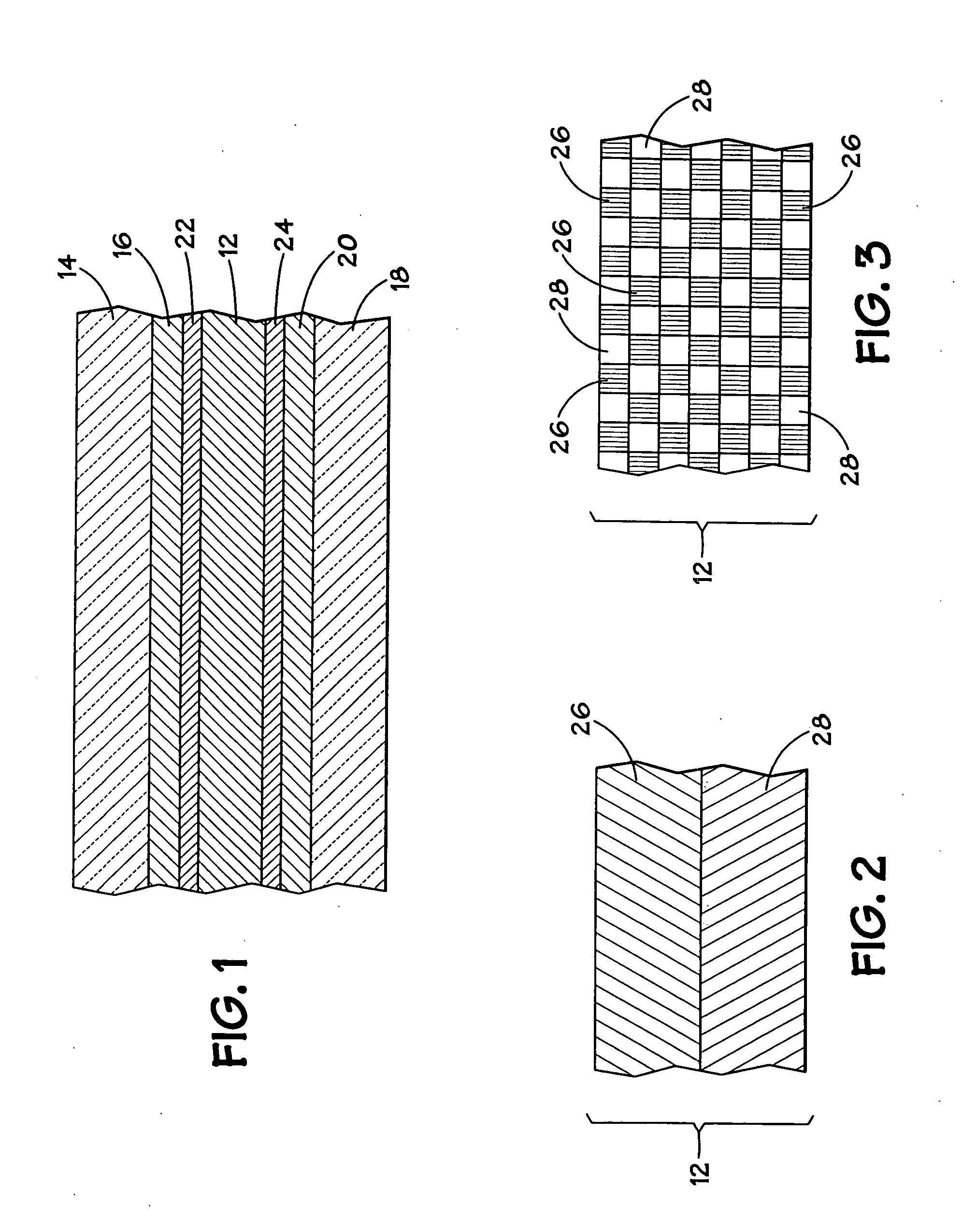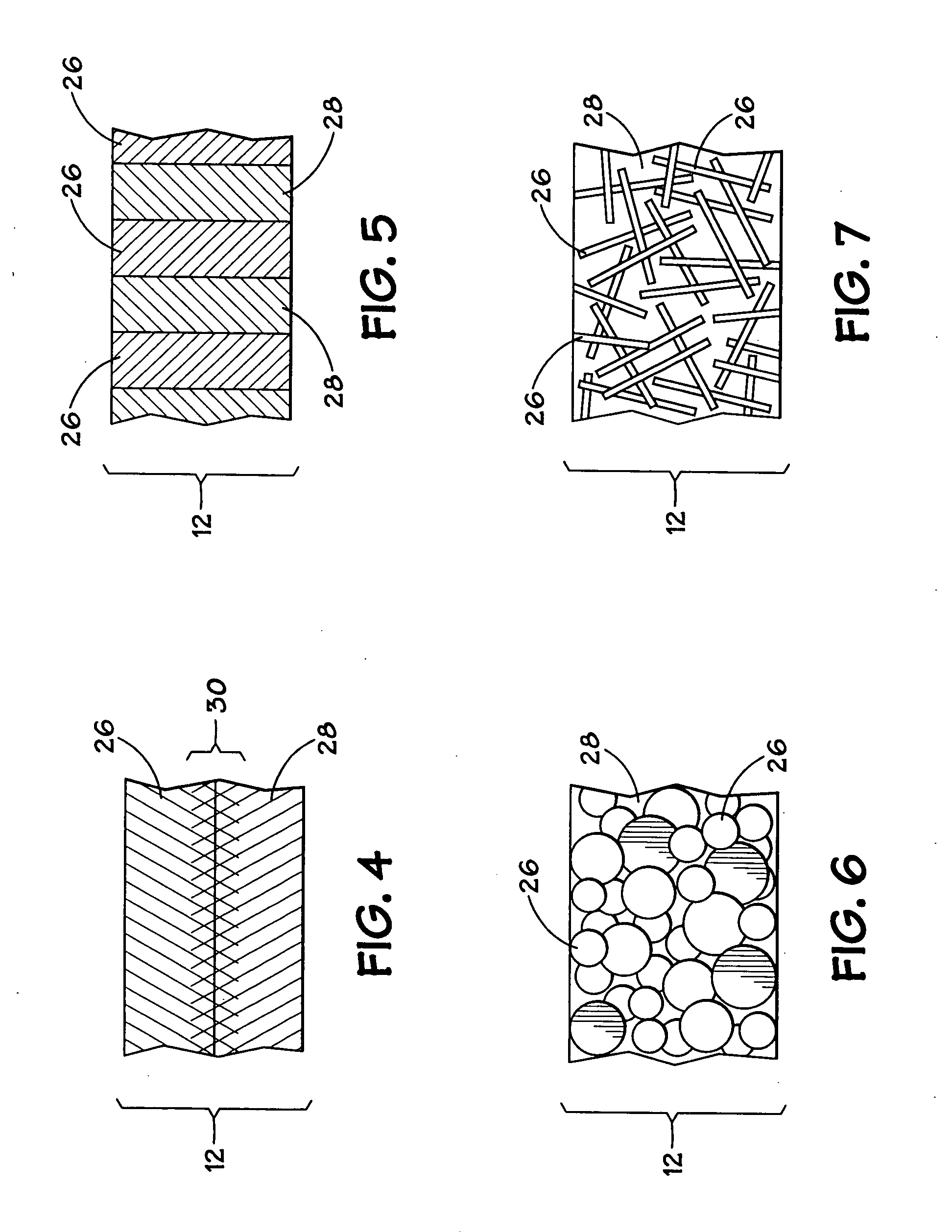Dye sensitized solar cells having blocking layers and methods of manufacturing the same
a solar cell and sensitized technology, applied in the direction of capacitors, solid-state devices, electrolytic capacitors, etc., can solve the problems of increased electrons and ions traveling a greater distance, disadvantageous increase in the thickness of the semiconductor film, and short circuit between electrodes
- Summary
- Abstract
- Description
- Claims
- Application Information
AI Technical Summary
Benefits of technology
Problems solved by technology
Method used
Image
Examples
Embodiment Construction
[0022]FIG. 1 illustrates an exemplary embodiment of a dye-sensitized solar cell 10, in accordance with embodiments of the present invention. The solar cell 10 may be fabricated by implementing any one of a number of techniques and using a variety of materials, as can be appreciated by those skilled in the art. The solar cell 10 includes an active layer 12 arranged between a first substrate 14 and a second substrate 18. The substrate 14 is transparent to allow impinging light to pass through the substrate 14. As used herein, “transparent” refers to a material allowing a total transmission of at least about 50%, preferably at least about 80% or higher, of visible light (i.e., having a wave length in the range from about 400 nm to about 700 nm).
[0023] Further, in accordance with one exemplary embodiment, the substrate 14 is generally thin and flexible, having a thickness in the range of approximately 0.25-50.0 mils, and preferably in the range of approximately 0.5-10.0 mils. As used h...
PUM
 Login to View More
Login to View More Abstract
Description
Claims
Application Information
 Login to View More
Login to View More - R&D
- Intellectual Property
- Life Sciences
- Materials
- Tech Scout
- Unparalleled Data Quality
- Higher Quality Content
- 60% Fewer Hallucinations
Browse by: Latest US Patents, China's latest patents, Technical Efficacy Thesaurus, Application Domain, Technology Topic, Popular Technical Reports.
© 2025 PatSnap. All rights reserved.Legal|Privacy policy|Modern Slavery Act Transparency Statement|Sitemap|About US| Contact US: help@patsnap.com



